|
|
|
.gif)

Historic Roads in the National Park System
MENU
Cover
Contents
Preface
Introduction
Early Roads
The Development of Park Roads
Teamwork/Cooperative Efforts
Evolution of Parkways
World War II and Beyond
Understanding and Managing Historic Park Roads
Bibliography
|
|
|
|
Historic Roads in the National Park System
|

|
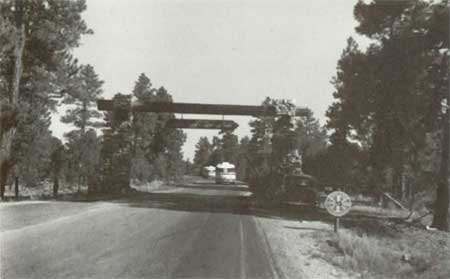
|
|
Fig. 37. During the 1920s and 1930s,
more subdued rustic structures marked park boundaries. At the south rim
of the Grand Canyon the log and stone gateway into the park established
the canyon's recurrent architectural theme in the motorist's mind.
(National Archives, Record Group 30)
|
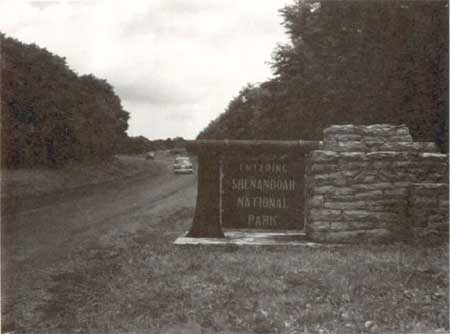
|
|
Fig. 38. Feeder roads that were not
primary routes into national parks received entrance treatments that
were more subdued but still in keeping with the park's architectural
theme. (National Archives, Record Group 30)
|
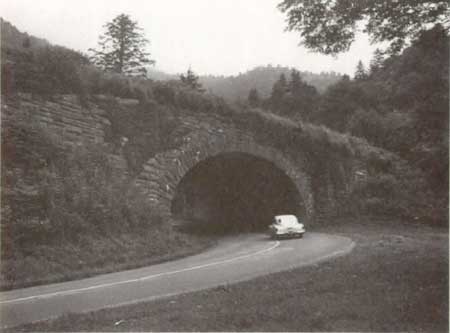
|
|
Fig. 39. Bridges such as this Loop
Bridge at Great Smoky Mountains National Park often had stone facings
similar to the stonework in other areas of the park (compare with the
stone facing on the south portal tunnel). This type of design
continuity contributed to a park's sense of place in the mind of the
visitor. (National Archives, Record Group 30)
|
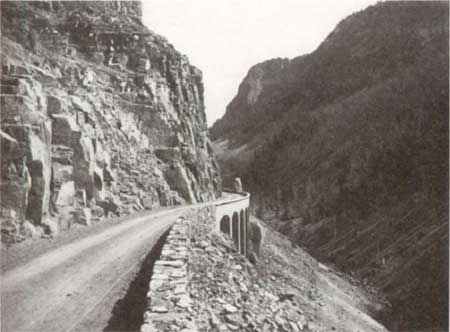
|
|
Fig. 40. Certain road featurs that
predate the National Park Service, such as the viaduct in Golden Gate
Canyon at Yellowstone National Park, can be noteworthy for several
reasons. In this instance the construction of the viaduct and road
contributed to the entire road system at Yellowstone, and the use of the
viaduct to hold the road instead of cutting into the mountainside for a
roadbed indicated a difference in perception of the land. The way in
which the army incorporated the "thumb" (the bedrock outcropping)
instead of removing it by blasting showed a concern for leaving some of
the natural features as they were. (National Archives, Record Group
79)
|
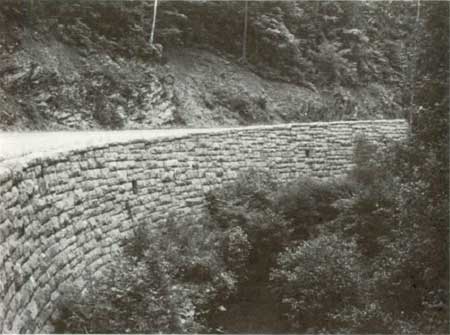
|
|
Fig. 41. Other individual features of
significance along park roads may include retaining walls. The rustic
stonework of this one in Great Smoky Mountains National Park followed
the park's design traditions, which were more rooted in the managed view
of nature and landscape that was typical of the eastern national parks.
(National Archives, Record Group 30)
|
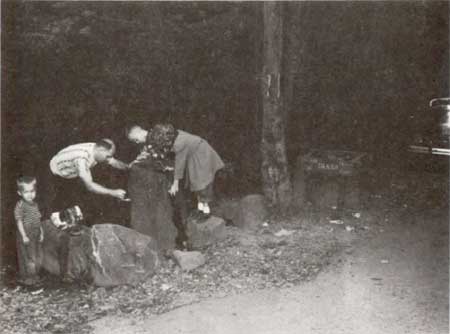
|
|
Fig. 42. Often park roads have small
enclaves of ancillary structures that contribute to the park road-trip
experiencde. This water fountain at Great Smoky Mountains National Park
was typical of that type of element that reinforced a visitor's
connection with nature in a slightly artificial manner. (National
Archives, Record Group 30)
|
NEXT >>>
|
|
|
.gif)








![]()
 Top
Top